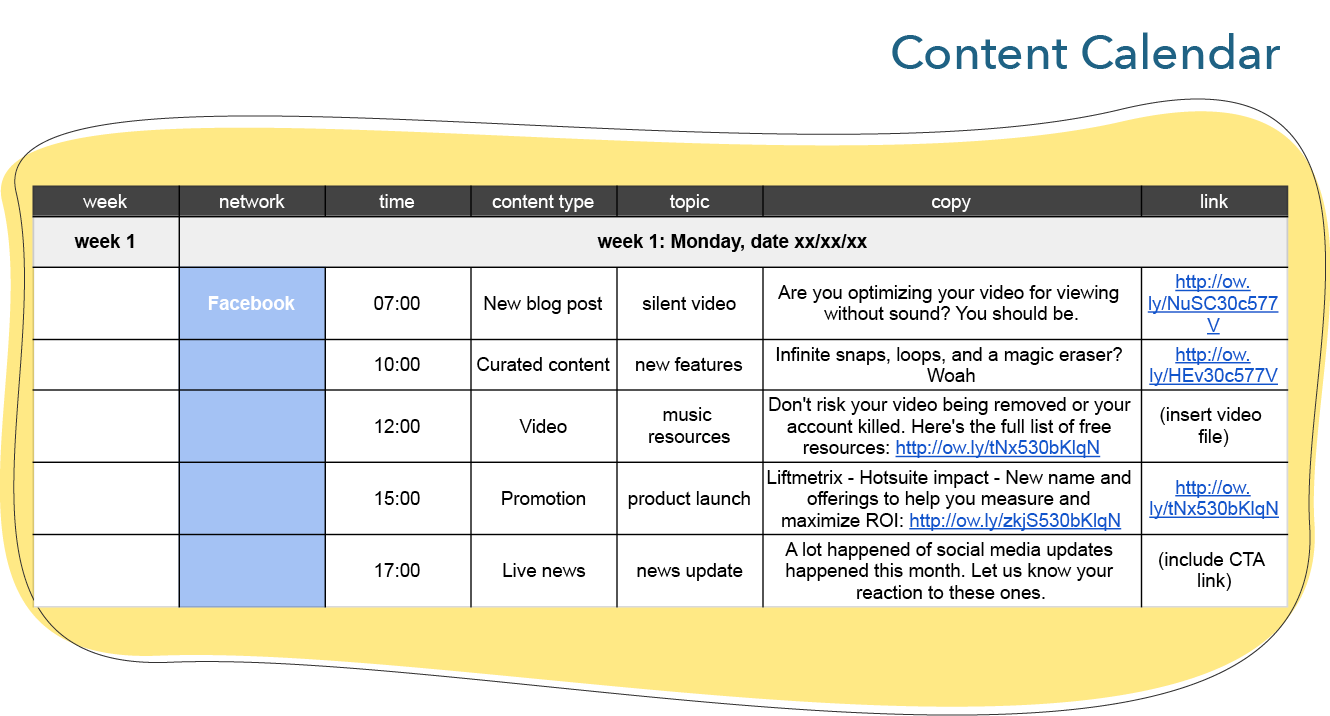Content Calendar
We conclude this chapter by discussing content calendars. Although pillar pages are a great long-term investment for web referencing and lead creation, most day-to-day content activities, be they posts on Facebook and Instagram or blog posts, are ad hoc activities. However, they should still be thought of from a mid-term perspective and integrated into a strategic approach to content marketing. This strategy should think of ways to build topic relevance over time, address many personas and stages in the journey process, and address all objectives of the RACE framework.
A great way to develop this strategy is through a content calendar. A content calendar maps future content creation activities. It answers questions like these:
- Who is this content for (personas)?
- Which stage of the journey does this content address?
- What topic is it on?
- What keywords does it cover?
It can also help operationalize content marketing by providing information including the following:
- date when it is supposed to go online
- author responsible for creating the content asset
- content type
- channel
- headline
- copy
- call to action
Figure 6.13 shows an example of a content calendar (text description here).
Figure 6.13 Content Calendar

Creating a content calendar should be done with reflexive intent. A firm should make sure that they are creating content for all stages of the journey, all personas, and all objectives of the RACE framework. By planning a month or two in advance and clearly mapping the personas, topic, journey stage, and RACE objectives that each piece of content addresses, a firm makes sure to create distributed efforts that do not privilege certain personas, stages, or objectives over others!
